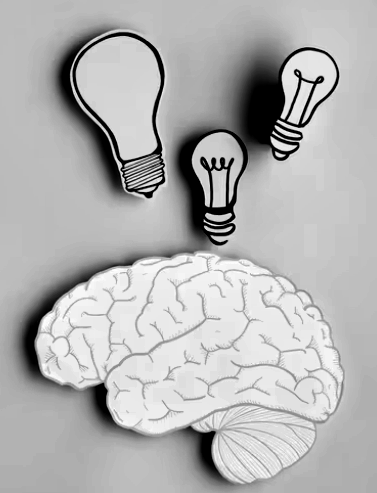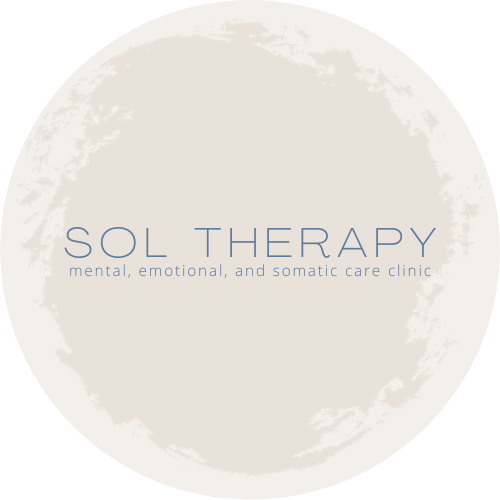Neuro-alignment Program
What is the Neuro-alignment Program?
The Neuro-alignment Program (NAP) is a drug-free, self-directed initiative designed to reverse limbic system misalignment in the brain and regulate the maladapted stress response often seen in chronic illnesses. By blending the principles of applied neuroplasticity, clinical hypnosis, and somatic psychology, this program supports conditions such as Chronic Pain, Chronic Fatigue Syndrome, Fibromyalgia, and Food Sensitivities.
How Does the Program Work?
The Neuro-alignment Program (NAP) focuses on the intricate communication between the brain and the body, offering a brain-based rehabilitation approach to retrain, “rewire” and realign faulty neural pathways. It combines scientific and holistic techniques, inspired by Dr. Norman Doidge’s pioneering work, to facilitate transformation from the inside out. The strategies employed are scientifically supported and widely endorsed in the field of neuroplasticity.
The Neuro-alignment Program’s Approach
Recognizing the limitations of solely cognitive-based approaches, the Neuro-Alignment Program (NAP) offers a comprehensive and integrative path to healing by emphasizing applied neuroplasticity as its core while incorporating somatic psychology for a balanced top-down and bottom-up approach.
NAP is grounded in neuroscience and applied neuroplasticity, seamlessly integrating somatic therapies to address both the mind and body. While cognitive-focused methods can bring improvement and relief, NAP recognizes that integrating the body into the healing process leads to sustainable, long-lasting outcomes.
This holistic program empowers individuals to retrain and rewire neural pathways, transforming how the brain and nervous system process stress, trauma, and emotional regulation. By blending neuroplasticity with somatic practices, NAP supports meaningful, enduring changes that go beyond surface-level techniques.
To achieve this, NAP incorporates a range of modalities, including an understanding of the brain and limbic system, the role of trauma, and the interplay between chronic and psychosomatic disorders. Techniques such as changing language patterns, incremental exposure exercises, clinical hypnotherapy, Emotional Freedom Techniques (EFT), somatic psychology, Polyvagal Theory, and breathwork are woven together to foster comprehensive healing and neural rewiring.
At its heart, NAP is designed to align the brain and body, retraining neural pathways while addressing trauma stored in the body. This integrated approach enhances emotional regulation, reduces stress, and creates a foundation for deep and lasting healing. The NAP emphasizes experiential learning and consistent practice, leading to lasting transformations in brain function and measurable improvements in physical, emotional, and psychological well-being. Participants are taught to:
- Recognize the acute stress response and learn how to manage and calm it
- Modify stress hormone production through movement, postural awareness, and applied neuroplasticity training
- Practice a series of steps to habituate the regulation method
- Exert conscious control to break the cycle of chronic stress response through rewiring the limbic system
Key Components of the Program
Top-Down and Bottom-Up Processing
The program employs both brain-to-body and body-to-brain strategies to promote healing.
Focus on Brain Function
Rather than merely chasing symptoms, the program aims to regulate a maladapted stress response by targeting brain functions.
Applied Neuroplasticity
Applied neuroplasticity is the practice of using targeted strategies and techniques to intentionally reshape and rewire the brain’s neural pathways. By leveraging the brain’s inherent ability to adapt and change, applied neuroplasticity aims to improve mental, emotional, and physical health outcomes. This approach is grounded in scientific research and involves various methods such as mindfulness, cognitive-behavioral exercises, and somatic practices. These techniques are designed to enhance neural connectivity, promote resilience, and alleviate symptoms associated with chronic conditions and stress-related disorders. Applied neuroplasticity empowers individuals to take an active role in their recovery and personal development, facilitating lasting positive changes in brain function and overall well-being.
Chronic Stress and Limbic System Impairment
Chronic or ongoing stress and various forms of trauma can cause the brain’s limbic system to become impaired, leading to a persistent fight, flight, or freeze response. This condition, known as Limbic System Impairment, can be triggered by:
- Chronic Psychological Stress: Ongoing stress from work, relationships, or financial difficulties can overload the limbic system.
- Emotional Trauma: Events such as loss, abuse, neglect, or witnessing violence can deeply impact limbic system functioning.
- Chronic Infections: Persistent infections like Epstein-Barr virus or other persistent viral, bacterial, or fungal infections can lead to chronic limbic system activation.
- Neurotoxins: Exposure to neurotoxic substances, including heavy metals (like lead and mercury), pesticides, and industrial chemicals, can impair neural pathways.
- Substance Abuse: Long-term use of drugs or alcohol can alter brain chemistry and impair the limbic system.
- Nutritional Deficiencies: Lack of essential nutrients, such as vitamins B12 and D, omega-3 fatty acids, and magnesium, can affect brain health and limbic system function.
- Sleep Disorders: Chronic sleep deprivation or disorders such as sleep apnea can disrupt normal brain function and stress response mechanisms.
- Autoimmune Disorders: Conditions like multiple sclerosis, lupus, and other autoimmune diseases can lead to inflammation that affects the brain and limbic system.
- Hormonal Imbalances: Imbalances in hormones such as cortisol, thyroid hormones, and sex hormones can impact the limbic system and stress response.
- Chronic Pain: Persistent pain conditions, including migraines and arthritis, can continually activate the limbic system.
- Social Isolation: Lack of social interaction and support can lead to increased stress and limbic system dysfunction.
- Developmental Issues: Adverse childhood experiences (ACEs) and developmental trauma can have long-lasting effects on the limbic system.
When the limbic system remains on high alert, it results in numerous symptoms such as chronic inflammation, poor memory, brain fog, digestive issues, lowered energy levels, numerous sensitivities, chronic pain, and sleep disturbances. This impairment affects various bodily functions, including detoxification, nutrient absorption, and cellular communication.
Holistic and Participatory Training
The Neuro-alignment Program addresses nervous system dysregulation in a holistic manner, focusing on clients’ overall needs rather than solely on symptoms. Framed as a fully participatory training, it empowers participants to actively engage in their healing process rather than passively receiving treatment.
Benefits of Rewiring the Brain
Through the Neuro-alignment Program, participants utilize neuroplasticity tools to rewire limbic system function, creating healthier neural pathways that support optimal functioning across all bodily systems. This shift from a chronic state of fight, flight, or freeze to a state of growth and repair allows for comprehensive healing and improved overall health.
What to expect?
- A Complimentary Exploration Call
- An On-site or On-line Initial Session (90 mins)
- A Full-4-Day On-site Program
- 6 Weeks of Home Practice with Weekly Check-Ins
- A Full-1-Day 1:1 On-site Session

The Stress and Trauma Response
The stress response is like a built-in alarm system in our bodies, designed to protect us from immediate threats. When faced with danger or stressors, such as encountering a predator or experiencing a sudden financial setback, our brain activates this alarm system, triggering a cascade of physiological changes known as the “fight-or-flight” response. This response is characterized by the rapid release of stress hormones like adrenaline and cortisol, which prepare the body to either confront the threat head-on or flee to safety.
In this state, our senses sharpen, our heart rate increases, and our muscles tense, ready for action. It’s like the blaring of sirens warning us of impending danger, urging us to react swiftly and decisively. This acute stress response is perfectly normal and adaptive, helping us navigate through challenging situations and ensure our survival.
However, the challenge arises when our brain struggles to switch off this alarm system once the threat has passed. In an ideal scenario, once the danger is resolved, the brain should signal for the stress response to stand down, allowing our bodies to return to a state of equilibrium or baseline. This is akin to turning off the sirens once the emergency is over.
Yet, for many individuals, particularly those grappling with chronic pain, chronic stress, trauma, or anxiety, the brain may struggle to deactivate the stress response, leading to a state of chronic arousal. In this prolonged state of hyperarousal, the body remains on high alert, with stress hormones continuously coursing through our system, even in the absence of an immediate threat. It’s like the sirens keep blaring long after the danger has passed, disrupting our internal balance and leaving us vulnerable to a range of psychosomatic, mental, and physical disorders.
This dysregulation of the stress response can manifest in various ways, from fibromyalgia, chronic fatigue syndrome, persistent feelings of chronic anxiety, severe panic disorder, and irritability to food intolerance, insomnia, digestive issues, and chronic pain. Breaking free from this cycle requires learning how to recalibrate the brain’s stress response system, teaching it to switch off the alarm when it’s no longer needed and return to a state of calm. Through applied neuroplasticity, individuals can retrain their brains to modulate the stress response more effectively, restoring balance and promoting overall well-being.
Note:
The Neuro-Alignment Program is an integrative approach designed to support individuals in retraining and rewiring neural pathways, regulating the nervous system, and fostering mind-body resilience. This program is intended for individuals experiencing psychosomatic symptoms or conditions influenced by nervous system dysregulation—including those who have received a diagnosis from the medical community and are exploring alternative, integrative, and holistic therapy through a trauma-informed, applied neuroplasticity-based retraining approach
This program is not a substitute for medical care and does not diagnose, treat, or cure physical injuries, acute medical conditions, or structural illnesses. If you have a medical condition, physical injury, or require urgent care, please seek support from a qualified healthcare provider. Each person’s experience is unique, and outcomes depend on individual engagement, readiness, and consistency. While many find these practices beneficial, healing is a deeply personal process.
